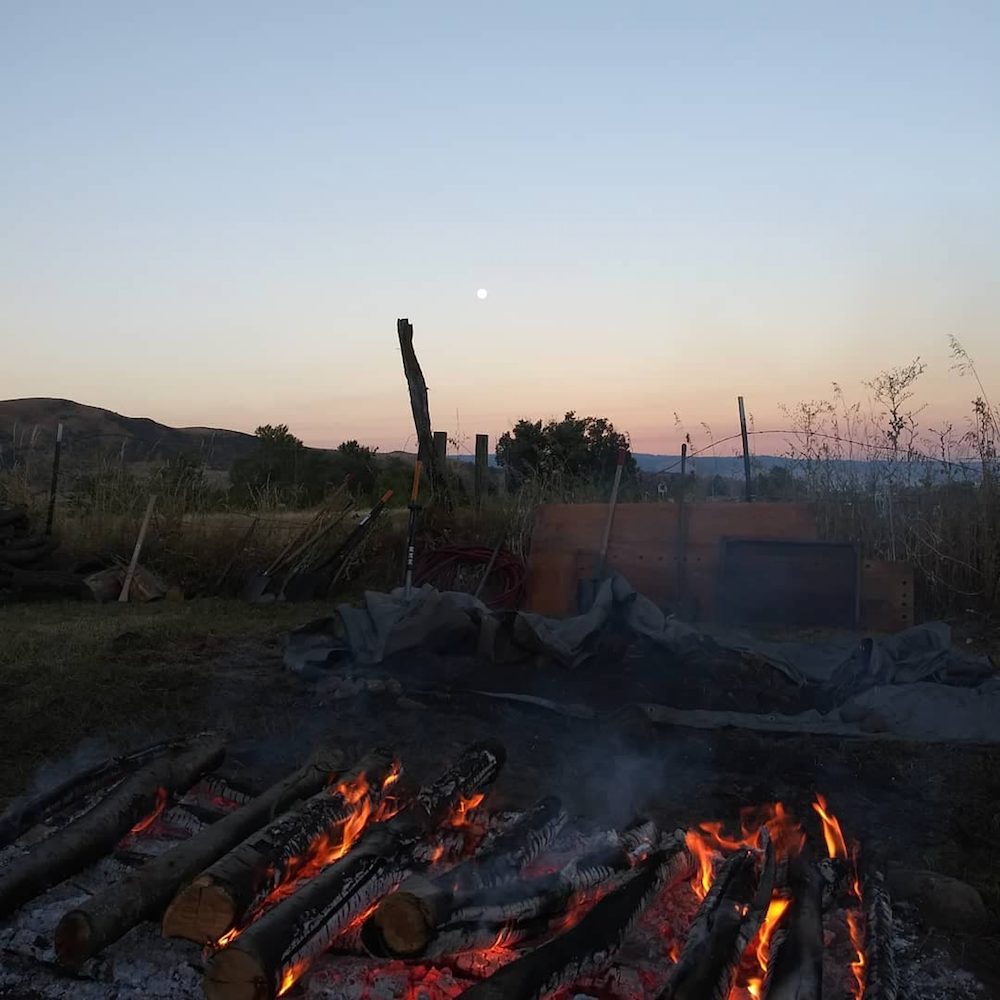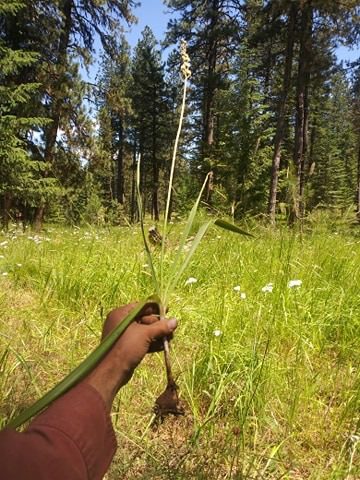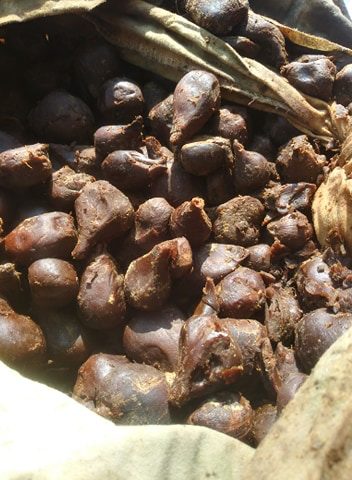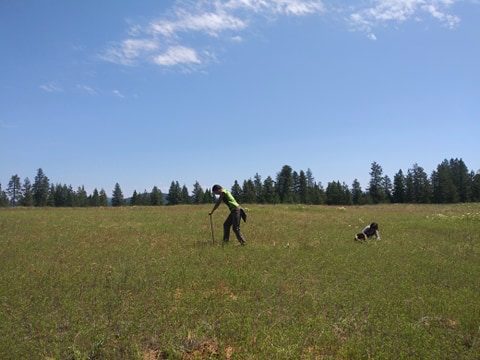“Restoration of habitats and regenerative, localized food production need to be foundational in our economies moving forward. We should be turning resources towards these efforts with the same vigor the destruction and depletion was carried out with. Sucking the life out of our lands while polluting the water to grow human fodder void of nutrition and send it oversees to the highest bidder is a march toward extinction and most are chained to this way of life by the corporate oligarchies that have more rights than human beings or the very sources of our lives. Many of us know and are implementing place-based solutions that ensure a future for all.” —Bobby Fossek II
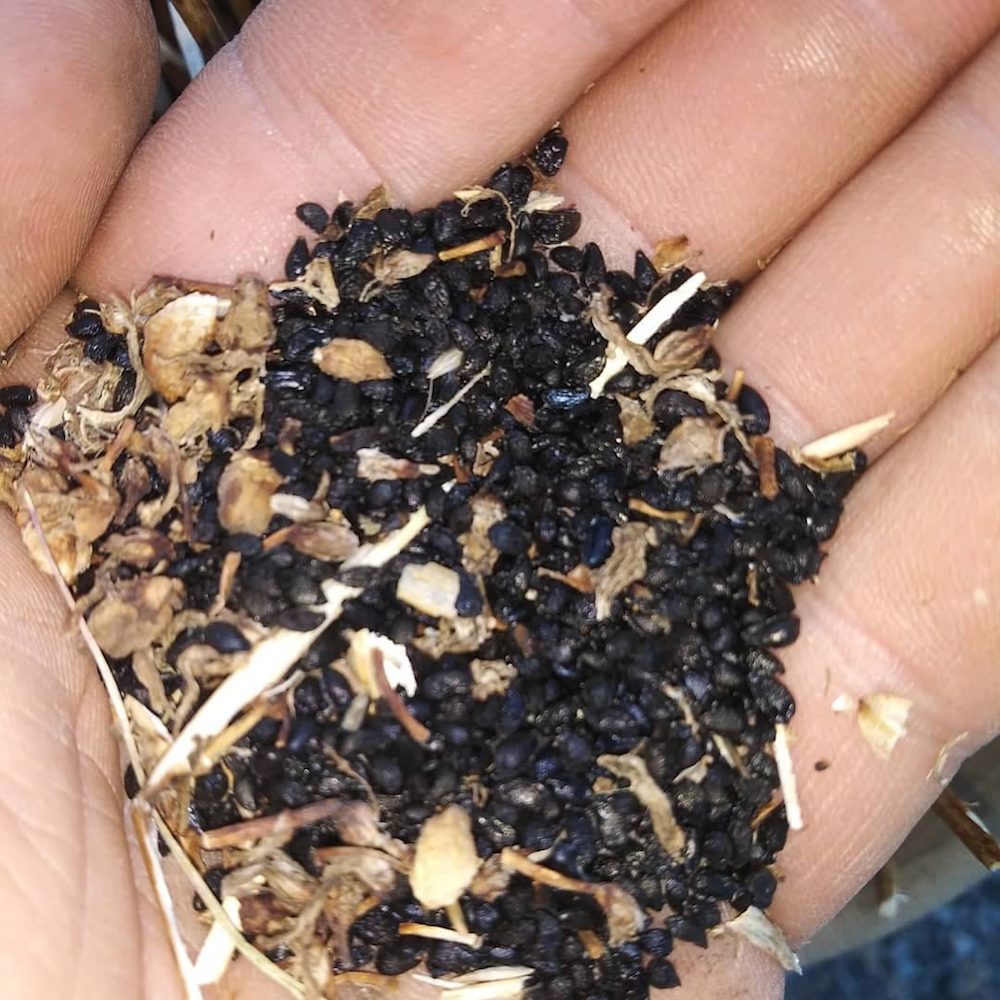
(Quotations from Bobby Fossek in this article are drawn from my podcast interview with him, which you can listen to here.)
Cove, Oregon, is a tiny town in the eastern part of the state that most Oregonians haven’t even heard of. Surrounded by fields of conventional monocrops in the heart of conservative ranching country, it seems an unlikely place for leading edge cultural transformation, and yet it is, thanks to what might strike some as an unlikely partnership between Native Americans and the Episcopal Church.
I first visited Cove, and met Bobby Fossek and his family, in the summer of 2017. I was traveling in the area with a friend on a foraging and wildtending mission that also took us to Hell’s Canyon. Bobby’s place was our base camp for a few days of picking and processing cherries from nearby trees, and we cooperated together in setting up drying racks and running their steam juicer.
Bobby is a Walla Walla and Yakima descendant from the Umatilla Reservation. In his youth, he picked up some traditional knowledge from his father, but it wasn’t until later in life that he committed more fully to learning and practicing the skills of his ancestors. Perhaps ironically, the Episcopal Diocese of Eastern Oregon provided the particular means to do so that he is now pursuing.
Para leer este artículo en Español, haz click AQUÍ

The Diocese is based in Cove, and has been running the Ascension School Camp there for decades. Bobby attended the camp regularly during his childhood because his father married an Episcopalian woman. As an adult, he visited the place again, and heard that the Diocese wanted to “right some wrongs” with the indigenous people whose land they were occupying. He inquired and they ended up inviting him to be part of that effort.
The background on this invitation is that, at its General Convention in 2009, the Episcopal Church passed a resolution repudiating the Doctrine of Discovery and calling on congregations to support efforts by indigenous people seeking respect for “their inherent sovereignty and fundamental human rights.” Steve Newcomb, a Lenape and Shawnee scholar at the gathering, said of the resolution that he hoped it would cause Christians to “look at how the Doctrine of Discovery is reflective of a mentality and type of behavior that is so destructive to the ecological systems of the planet.”
For his part, Bobby has been wary of Christians because of “the long history of people using the name of Christ and calling it Christianity while snuffing out anyone who stood in the way of industrial progress” but he recognized that these Episcopalians were “open-minded and open-hearted” and he accepted their offer.
Eventually, they provided him and his family housing at the camp, as well as a salary, and now he is known as the “Habitats Manager” for the property.
Too often, “restoration” entails no more than removing non-native vegetation, frequently with herbicides (thanks Monsanto), and maybe plunking a few plants in the ground before walking away and returning only for occasional “monitoring.” Additionally, humans are often explicitly excluded from such areas, partly from a misbegotten concept of “wilderness” that ignores the fundamental role played by indigenous people in creating the original, pre-colonial landscapes that are presumably what are being restored.
That is to say, many of the ecosystems that the Europeans pillaged for their agriculture and extractive industries were not “unpeopled” and “pristine” but rather the result of intentional shaping by Native Americans. Plants were bred, propagated, and introduced into new regions. Fires were set to maintain certain stages of succession that would best provide food and medicine. Such activities are sometimes described under the heading of “wildtending.”
The Grande Ronde valley, where Cove is situated, was no different. Before European settlement it was a land of streams, wetlands and prairie that supported a diverse variety of foods, among them Camas, a root crop that thrives in riparian zones. According to Bobby, when the first European settlers looked down from the hills onto the fields of blooming Camas in valley, they mistook the masses of blue blossoms for bodies of water.
The streams were home to Salmon, who swam up from the Pacific by way of the Columbia and Snake rivers. The slow-moving waterways meandering under the shelter of vegetation provided perfect habitat for the fish to lay their eggs and their young to develop.
Because of all this bounty, the valley was a traditional gathering place in certain seasons for many tribes. Bobby says he has felt a genetic connection to the area from a young age, so it made total sense to take up restoration work there.
There’s a lot of work to do, too. The Camas fields are gone–their wetland home having been drained–replaced by wheat, alfalfa and mint. The streams were straightened, channelized and converted into irrigation ditches; the water runs too warm and swift for proper habitat, not that many Salmon make it this far anymore because of the multitude of dams on the Columbia and Snake. The seasonal, multi-tribe gatherings were interrupted long ago.
The 88 acres on the Ascension property were planted as cherry and plum orchards by the first settlers, and few of those trees remain around the edges, feral, but still producing fruit for humans and wildlife alike. The fields were monocropped with wheat and sometimes alfalfa for 75 years.
Now Bobby is reintroducing native bunch grasses such as Great Basin Wildrye, Blue Fescue, Bluebunch Wheatgrass, Tufted Hairgrass, and others. Grasses are often overlooked in favor of trees and wildflowers, but they play vital roles in their ecosystems, providing food, habitat, soil stabilization, nutrient transference, and more. As a stage in ecological succession, they are a precursor to other plants that would not make it on their own without the shelter they provide. Additionally, grasses provided materials for crafts for indigenous cultures.
This year, a wave of trees and shrubs were planted, like Serviceberry (aka Saskatoon), Golden Currants, Elderberry, Redosier, Cottonwoods, Mockorange, and Woods Rose. More are planned for next year. Not everything that’s planted survives of course, but always more than if nothing had been planted at all.
Waterway restoration is also underway to help the meanders to return, which will make the system more hospitable to fish. A culvert was removed this year and floods are being encouraged rather than prevented. The wet areas are once again hosting Wapato, a first food whose roots grow in the mud underwater. It stands out with its distinctive arrow-shaped leaves.

How are these activities different from most restoration projects implemented by universities, conservation non-profits or the like? Because they are the latest expression of cultural practices that go back thousands of years, not merely educated guesses and theories. Repairing the land is directly linked to repairing a way of life. Not just an ecosystem is being restored, but “home.” Said Bobby:
“Our creation story and how we came to be is all centered around taking care of our ecosystem, and of the natural functions of this region particularly… This old societal function plays a vital role in adapting and moving forward as we are trying to find ways of getting out of this mess. Food scarcity and poverty–it’s all man made. If we follow natural law, we’ll be okay, even in times of hardship. There are cycles of famine and stuff but they are exacerbated by us. By us changing away a natural way of life.”
Bobby’s work is not limited to the Ascension School Camp. He and his family, sometimes with other folks, make treks into the surrounding country, which includes the Wallowa Mountains, often on horse. They harvest traditional plants not only for food but also for crafts, which they are relearning too. They also collect seeds and tubers for plant propagation, a traditional activity of indigenous people everywhere around the world that hasn’t gotten as much attention in settler-colonial societies as other endeavors like hunting.
Though the Native American cultures of the northwest had some permanent settlements, much of the population lived in a migratory fashion, moving around the greater area with the seasons to take advantage of different food sources. Extensive trail systems once existed, now in different states of upkeep, crossing private and public land. Bobby has an interest in revitalizing these networks, building relationships with land owners where necessary, so that traditional routes could be followed again.
Bobby coordinated the return of an important event to the Cove area in 2020: the Camas Bake. Back in the day, the Camas Bake there was a major event, attracting many families from different tribes. The cooking process itself takes multiple days and serious preparation. A pit is dug, rocks are placed in the bottom, and the rocks are heated with fire. Then, a layer of mud, Great Basin Ryegrass and native mint is laid in. The peeled Camas roots are spread on top of that, and covered with another layer of mint and Ryegrass and mud. Then, a fire is set on top of everything and is kept going for three days.

This was a lot of work, so everyone cooked their food together this way, communally, not a pit to each family. This time was an opportunity for deep connection, very different from contemporary life, which is marked by isolation and speed.
The 2020 Bake involved Walla Walla, Umatilla and Cayuse folks, and was–as far as anyone knew–the first time it had happened in nearly a century. It also represented a dream come true for Bobby, who had been holding the idea in his heart for many years:
“We like to think of it as putting the heart back in the valley by putting that fire back in the ground, and cooking that Camas in the belly of the Mother again here… That alone gives us something to work on most of the year, because when we we gather the Camas, we’re not just gathering Camas. We’re gathering Wild Carrots and other summer foods as well. And then that three days around the fire baking it gives us an opportunity to really connect and pass along teachings and share a lot of skills and knowledge. Last year, we were only able to have a small group of mostly family due to coronavirus, but on into the future we hope to make it a yearly event for our community. [For] the Ascension School, part of their reconciliation and reparation efforts are to allow us the use of their campus and facilities for any of our revitalization efforts.”
Another key aspect of the restoration work is language. Says Bobby:
“You can’t restore the landscape without restoring the indigenous presence. And you can’t restore our indigenous presence without revitalizing those languages that hold a key to a lot aspects of how that land works and how our relationship is with it….
“The language and the place names are like a track that was left to remind us that this place is known for having a lot of this or this place we went for that. So that will tell you what time of year and what we were there for.
“And then the foods: all the foods and the plants and the animals, learning their names while gathering them. And, through the various practices that go with them. Because for every step of the process, there are certain words you use and certain songs you sing for different things.
“What we have found is that the best way to retain is through doing it. That’s why we’re working towards having a seasonal round immersion program where, throughout the entire year, we have various opportunities to be immersed in what we are doing at that time of year, what the original laws guide us to be doing at that time of year, and doing that in an immersed setting, camping there.”
So when it comes to these place-based solutions, we are not talking merely about what science tells us, but also about values and relationships as were culturally practiced and retained.
At that level, Bobby and other indigenous people who are doing this work have “skin in the game,” so to speak, in a way that settler-colonialists do not. Of course, those of us who fall into that category can open ourselves to these other ways of acting and experiencing, as the Episcopalians have done. Bobby says that their working relationship has not always been easy; they’ve had their ups and downs but they have worked through things together.
As time goes on, and other cross-cultural collaborative projects like the one in Cove are undertaken, surely the experience of friction will be repeated. Those of us of settler-colonial culture will be challenged, repeatedly, as we strive to break free from our privilege and our roles as oppressors. Our culture is crass and our urges are adolescent. We have much to learn about respect and maturity. This is not to lionize all Native Americans, who are, after all, just people too; but they have a cultural foundation that we lack. Our own indigenous forebears in Europe were wiped out a very long time ago,
The work won’t always be easy, but it’s essential. Western culture is inherently domineering and that quality has brought us to the brink of disaster and, perhaps, extinction. Fortunately for us, other traditions still exist that demonstrate another way. I suspect we are incapable of adopting them completely all at once; our collective trauma probably prevents that, but perhaps our next generations can manage to return.
Bobby is in the first stages of establishing a non-profit to help support all the work he is doing with the Ascension School Camp and the tribes, tentatively named Naknuwithlama Tiichamna, which is, “Caretakers of the Land.” In the meantime, if you care to donate, you can do so through the Ascension School Camp website.
